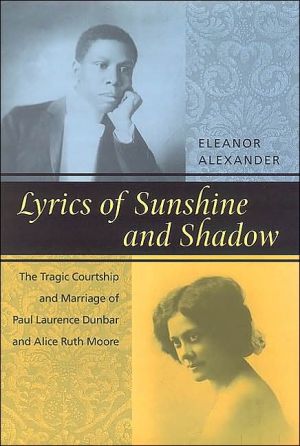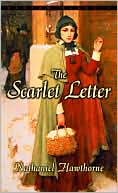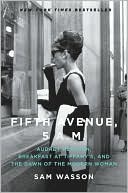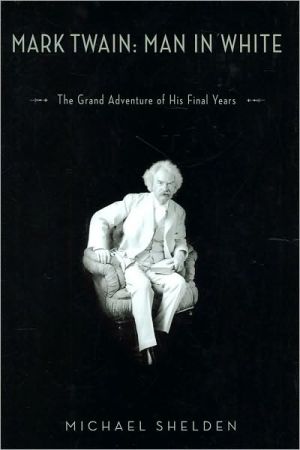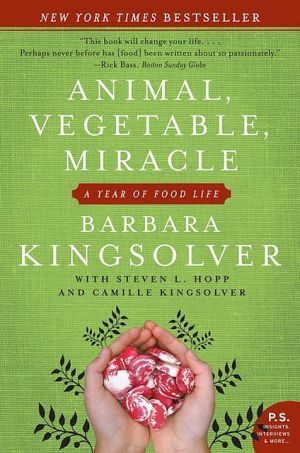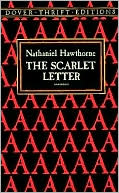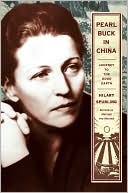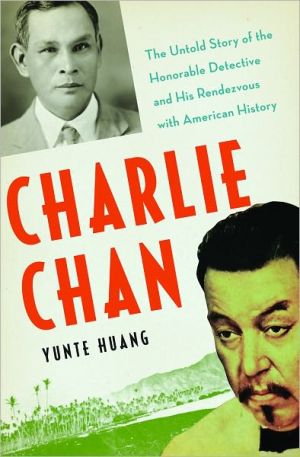Lyrics of Sunshine and Shadow: The Tragic Courtship and Marriage of Paul Laurence Dunbar and Alice Ruth Moore
A New York Times Notable Book of 2002!\ Sexism, racism, self-hatred, and romantic love: all figure in prominently in this scholarly-but nicely hard-boiled-discussion of the bond between the famous Paul Laurence Dunbar and his wife Alice. Eleanor Alexander's analysis of turn-of-the-twentieth-century black marriage is required reading for every student of American, especially African-American, heterosexual relationships."\ —Nell Painter, Edwards Professor of American History, Princeton...
Search in google:
A New York Times Notable Book of 2002! Sexism, racism, self-hatred, and romantic love: all figure in prominently in this scholarly-but nicely hard-boiled-discussion of the bond between the famous Paul Laurence Dunbar and his wife Alice. Eleanor Alexander's analysis of turn-of-the-twentieth-century black marriage is required reading for every student of American, especially African-American, heterosexual relationships."—Nell Painter, Edwards Professor of American History, Princeton University, Author of Sojourner Truth, A Life, A Symbol "Rich in documentation and generous in analysis, Lyrics of Sunshine and Shadow advances our understanding of late nineteenth- and early twentieth-century African American social and cultural history in compelling and unexpected ways. By exposing the devastating consequences of unequal power dynamics and gender relations in the union of the celebrated writers, Paul Laurence Dunbar and Alice Ruth Moore, and by examining the hidden underside of the Dunbars' storybook romance where alcohol, sex, and violence prove fatal, Eleanor Alexander produces a provocative, nuanced interpretation of late Victorian courtship and marriage, of post-emancipation racial respectability and class mobility, of pre-modern sexual rituals and color conventions in an emergent elite black society."—Thadious M. Davis, Vanderbilt University "Eleanor Alexander's vivid account of the most famous black writer of his day, Paul Laurence Dunbar, and his wife Alice, illuminates the world of the African American literati at the opening of the twentieth century. The Dunbars' fairy-tale romance ended abruptly, when Alice walked outon her alcoholic, abusive spouse. Alexander's access to scores of intimate letters and her sensitive interpretation of the Dunbars mercurial highs and lows reveal the tragic consequences of mixing alcohol, ambition and amour. The Dunbars were precursors for another doomed duo: Scott and Zelda Fitzgerald. Alexander's poignant story of the Dunbars sheds important light on love and violence among DuBois's "talented tenth." —Catherine Clinton, author of Fanny Kemble's Civil Wars "Lyrics of Sunshine and Shadow debunks Dunbar myths... Lyrics asks us to consider the ways in which racism and sexism operate together."— The CrisisOn February 10, 1906, Alice Ruth Moore, estranged wife of renowned early twentieth-century poet Paul Laurence Dunbar, boarded a streetcar, settled comfortably into her seat, and opened her newspaper to learn of her husband's death the day before. Paul Laurence Dunbar, son of former slaves, whom Frederick Douglass had dubbed "the most promising young colored man in America," was dead from tuberculosis at the age of 33. Lyrics of Sunshine and Shadow traces the tempestuous romance of America's most noted African-American literary couple. Drawing on a variety of love letters, diaries, journals, and autobiographies, Eleanor Alexander vividly recounts Dunbar's and Moore's tumultuous affair, from a courtship conducted almost entirely through letters and an elopement brought on by Dunbar's brutal, drunken rape of Moore, through their passionate marriage and its eventual violent dissolution in 1902. Moore, once having left Dunbar, rejected his every entreaty to return to him, responding to his many letters only once, with a blunt, one-word telegram ("No"). This is a remarkable story of tragic romance among African-American elites struggling to define themselves and their relationships within the context of post-slavery America. As such, it provides a timely examination of the ways in which cultural ideology and politics shape and complicate conceptions of romantic love.New York Times Book ReviewAlexander s significant, welcome book gives us so much to think about in the moving story of two people, trying to find their way into the world and each other s lives.
LYRICS of SUNSHINE and SHADOW\ THE TRAGIC COURTSHIP AND MARRIAGE OF PAUL LAURENCE DUNBAR AND ALICE RUTH MOORE A History of Love and Violence among the African American Elite\ \ By Eleanor Alexander\ New York University Press\ \ Copyright © 2001 New York University.\ All rights reserved.\ ISBN: 0-8147-0696-7\ \ \ The Child Is Father of the Man\ Hello, old friend, are you married? No, I'd just as soon be buried!\ Take your matrimony with you. It's to me as thin as tisheu [sic]\ —Paul Laurence Dunbar, age 11 (1883)\ One day in 1883, eleven-year-old Paul Laurence Dunbar sat down to write yet another poem. Since the age of six, he had been "rhyming," as he described his juvenile craft. His inspiration came from verses in his first-grade McGuffy Reader, especially those by the British Poet Laureate, William Wordsworth. Paul, who in his prime would be designated Poet Laureate of the Negro Race, did not publicize or save his early works. In secret, he scribbled them in his spelling book, showing them to no one. They were not even shared with the person who was, and would remain, most important in his life—his mother, Matilda Dunbar (c. 1845-1934), a former slave.\ But today's poem was different. It would be shared, revised, and added to the growing pile of "stuff" by Dick, as his family called him. Also, Matilda now safeguarded these writingsof her youngest son, keeping them in cardboard boxes. She had discovered that Paul was gifted when he was about seven years old. Since then, she had encouraged him in his projects and given him favorite-son treatment. Of her three children, Paul would go farthest. Matilda would sec to it.\ This new poem about marriage was special, written for the recent engagement of Paul's twenty-year-old half-brother, William Murphy (1864-1932). The poem is also prophetic and revealing. Tension hovers over its seemingly humorous lines. Instead of conveying the love and happiness traditionally associated with an approaching wedding, the poem speaks of distrust, if not a disdain for marriage. A psychiatrist who studied Paul's poetry believes the poet exposed himself in his work and laid "bare [his] emotional life." It would seem then, that even at this early age, Paul knew the darker side of marriage. One of his many biographers contends the marriage rhyme merely expresses a typical young boy's "disgust for romance." Her statement should be augmented. Paul's negative portrayal of love and marriage resulted in no small part from witnessing his parents' union. At its best, that relationship was "as thin as tisheu." Matilda and Joshua Dunbar (1823?-1885), both former slaves, had a stormy, violent union. Young Paul perhaps recorded in rhyme what he had internalized about intimacy from his primary role models. His poem confirms the theory that a person's behavior is a consequence of social situations in which the individual lives, and that this person is profoundly influenced by such environments. Paul's later turbulent relationship with Alice Ruth Moore would reflect much of what he learned about love and marriage at his parents' hearth.\ More than familial factors contributed to Paul's development and impacted his adult behavior. George Eliot in 1866 accurately assessed the intermingling of public policy and personal experience, writing: "There is no private life that has not been determined by a wider public life." Paul was nurtured not only in a family in conflict, but also in the factionalism of his city and nation. His era was a time of paradoxes. Its glitz and glitter harbored the cultures of Social Darwinism, sexism, and racism. Alcoholism and tuberculosis flourished, as did various strains of social diseases. Class divisions became more pronounced as industrialism and the growth of big business put great wealth in the hands of few. Large numbers of southern and eastern European immigrants were perceived as threats to the Aryan predominance of the majority Euro-American population. These new immigrants often competed with the "new citizens"—recently freed African American slaves—for low-skilled wages and jobs. In such struggles, African Americans usually lost. If hired, they received less pay than other laborers. Paul's father, Joshua Dunbar, was a perpetual member of this group of itinerant, hapless job seekers.\ This time period has been designated the nadir for African Americans because of the intense racism associated with skin color throughout America. Across the nation, people of color were viewed as lazy, improvident, childlike, irresponsible, chicken-stealing, crap-shooting, razor-toting, immoral, criminal beings. As far as most whites were concerned, the end of slavery did not make people of color their equal. They refused to accept the Fourteenth Amendment making African Americans citizens and vesting them with the same rights of citizenship that other Americans had. In the South, legislators passed black codes that severely restricted the freedom of people of color. Using threats, beatings, rape, and murder, terrorist groups such as the Ku Klux Klan and Knights of the White Camellia attempted to force blacks into subordination. James D. Corrothers, one of Paul Laurence Dunbar's friends, provided further insight on the prevailing racial dynamics:\ The North promises what it cannot or does not fulfill; the South is not hypocritical in this respect. In the North, an ambitious Negro bumps into the colour [sic] line unexpectedly, on the street cars, in hotels, theaters, parks, public buildings and schools ... at the polls and even in the church of Christ. Yet he may go a week or a year sometimes without meeting any unusually humiliating experience. In the South, he is given immediately to understand that he must get definitely on his side of the color line and stay there. (Emphasis in original)\ Racial strife was no stranger to Paul's small hometown of Dayton, Ohio. During slavery, Ohio had been considered by bondsmen and slave women as part of the promised land. But not during Paul's era. Some late-nineteenth-century African American Daytonians believed they had been "surrounded by strong prejudice ... since the Civil War ... [and] that the prejudice [had] been growing stronger every year." Most Euro-American residents viewed the matter differently. One commented that prejudice existed because "the old-fashioned negroes who `knew their place' were all gone and ... the new generation was impudent and vicious." Another expressed a racist ideology that may have been the foundation for the discord, remarking: "This is the way I class the nigger among the races—(1) the white man, (2) the Mongolian, (3) the Japanese, (4) the Chinaman, (5) the dog, and (6) last, the nigger."\ Class added another important dimension to Paul's formative years, for he grew up in dire poverty. He was also shaped by the gendered activities and attitudes of his environment and the psychological scars his parents and nation carried from slavery. It would have been impossible for Paul to evade the influence of his cultural milieu. Most people are shaped to the form of their culture because of their enormous malleability. They are plastic to the molding force of the society in which they are born. On the pervasive nature of one's environment, one scholar notes:\ Society ... is not something "out there" ... but it's also "in here," part of our innermost being. Society ... shapes our destiny, our thoughts and emotions. The structures of society become the structures of our own consciousness. Society does not stop at the surface of our skin. [It] penetrates us as much as it envelops us.\ Can aspects of Paul's complex, contradictory union with Alice be traced to his childhood nurturing? If so, does that mean that we are merely passive organisms, acting and reacting to the pressures of a past socialization pattern? No event, interaction, or action is the product of one variable or process. While social construction begins at birth, it is a nonending procedure that is negotiated and potentially problematic in every episode between two or more individuals. The ever-continuing socialization process, then, affords a choice. The study of a young child furnishes insights into its adult interactive patterns, and conversely the mind of the adult is a model against which child development can be measured.\ The aspects of Paul that attracted Alice—his genius, talent, social charm, driving ambition, and fame—surfaced in his childhood and youth, and he acknowledged the impact of these early years on his adult life. When, at the height of his career, a friend asked: "Who has made it possible for you to loom so far and above any of your people? Whose fine nature do you possess? To whom are you indebted for your bright intelect [sic]?" Paul answered: "[G]enerally speaking the influences surrounding me during the formative period were not conducive to growth, and any development in myself came from fighting against them."\ Paul did not win the fight against all the negative influences. The seeds of alcoholism, gender-role inequities, racial inferiority and ambivalence, abusive behavior, and near-Oedipal devotion to his mother that were planted in his youth flowered. When full grown, they strangled his private and public lives. In the words of one of Paul's contemporaries, the poet had "sow[n] a character [and] reap[ed] a destiny." Paul's early years give credence to the words of William Wordsworth, the British Poet Laureate whom he so admired as a child: "The child is father of the man."\ Paul was born seven years after the Civil War, on June 27, 1872, at 311 Howard Street in Dayton, Ohio. His birth occurred during the evening hours, in a back bedroom of a modest home purchased by his maternal great-grandmother, Rebecca Porter (1790?-1869). Paul's mother later recalled the day of her youngest son's birth as extremely hot for early summer in Dayton. She also remembered in detail how her small, sickly baby received his portentous name. According to Matilda, a few days after giving birth her husband, Joshua Dunbar, came to her and asked:\ "Madame, have you named your baby?"\ "No, I haven't."\ "Well, I have a name."\ "What is it?"\ "Paul."\ "What? Paul? That old name?"\ "Madame, that is a fine name! That's a great name! Why don't you know that [Apostle] Paul was a great man? This child will be great some day and do you honor."\ Matilda added that her sister, Rebecca Voss, gave Paul his middle name of Laurence.\ The days following Paul's birth were happy ones for Matilda and Joshua. Although married roughly only six months at the time of Paul's birth—having wed on Christmas Eve 1871—Joshua was delighted with his newborn son. "Madame, that's my baby," he reportedly said. "[H]e has my hands. Yes, that's my baby—the little rascal!" Believed to be about forty-nine years old—former slaves rarely knew their exact birth date—Joshua was also believed to be a father for the first time. Matilda, at least twenty years younger than her husband, had two sons from a slave marriage. William Travis Murphy (1866-1932) and Robert Small Murphy (1866-c. 1940) were eight and six years old, respectively, when their half-brother, Paul, was born.\ The euphoria surrounding Paul's birth did not last. Fear, tension, and heated verbal exchanges endemic to the household returned. Reportedly, over the years young Paul and his half-brothers hid under the bed or left home during the altercations between Matilda and Joshua to get out of harm's way. It was as a child that Paul learned how later to terrorize his wife; for his father was a brutal husband. Matilda recalled her marital woes in an interview:\ I don't think he [Joshua] was right in his mind. He had some of the worst spells—came home ravin'. When he had one of his tantrums, he threatened to kill me. I got afraid of him—and I had a nasty temper. I still think he wasn't right in his head. Poor man! He had been through the [Civil] war and so much; and around the cannon! And he drank! Sometimes he wouldn't go to bed at night. He would walk the floor. May be I would wake up and he would be standing over me, saying, "I'll get you yet!"\ The evidence suggests that Matilda was a battered wife. Thinly veiled characters and situations in Paul's autobiographical novel, The Uncalled (1898), paint a chilling portrait of life in his childhood home. In the story set in the mythological town of "Dexter, Ohio," which resembles Paul's hometown of Dayton, Ohio, the hero's father has a drinking problem. This is not unlike Joshua and, subsequently, Paul himself. The fictional father "was a brute: sich beatin's as he used to give [his wife] when he was in liquor you never heerd tell of," says one of the story's characters. The wife, Margaret—obviously Matilda—divorces her husband, just as Matilda divorces Joshua. Further evidence that the novel is drawn from real life may be inferred in Paul's statement about his book: "I mean all I say in it and mean it very much."\ Like a typically battered woman, Matilda shouldered some responsibility for her husband's abuse, saying she had a nasty temper. Abusive behavior, however, originates from within. Research indicates that the more violence a man experiences growing up, the more likely he is to use violence as an adult. Also, batterers often have low self-esteem and vulnerable self-concepts. Then, too, there is often a relationship between alcohol use and spousal abuse.\ Nothing is known about Joshua's childhood except that he lived with cruelty and violence. In all probability he, too, was victimized. He had been a slave, and whippings were commonly received and witnessed during slavery. So were other forms of brutal treatment. Many who grew up under the lash used it in their homes. The pervasive atmosphere of violence, coupled with complex issues of marital discord, often resulted in spousal abuse in slave families.\ It continued after freedom. Since no quantitative studies exist, it is impossible to know the extent of wife beating after emancipation. But a tune sung by some African American women from a small rural area suggests it was common in their community. The women sang: "Black men beat me/White men cheat me." Numerous complaints in Freedmen Bureau records indicate the practice was widespread; and Frances Ellen Watkins Harper, the African American reformer and author, found herself "preaching against [black] men ill-treating their wives" during a post-Civil War lecture tour of the South.\ In Paul's childhood home, his parents' marital discord climaxed seven months after his birth, when Matilda realized she was again pregnant. Joshua, who had relished his son's birth, was not happy with the second pregnancy. His subsequent reactions toward this child (a daughter with whom he refused to associate) suggest he may have questioned her paternity or had little value for girl children. Matilda, too, was less than enthused about this pregnancy. She basically supported the family as a washerwoman because her husband was a poor provider. Racial prejudice and personal weaknesses prevented Joshua, a skilled plasterer, from working regularly at his trade. Seemingly, he never had steady work. He numbered among the vast majority of skilled former bondsmen who were excluded from well-paying jobs. Usually, Joshua joined the ranks of itinerant African American laborers, hoping to be hired for the day. In 1871, the year before Paul's birth, the average daily wage for unskilled labor was $1.50.\ Several Dunbar biographers cite Joshua's marginal employment as the chief source of conflict between him and his wife. It may have been one factor; however, there appears to have been a general reluctance on Joshua's part to take care of his family. He received a monthly Civil War veteran's pension of $25 that—according to Matilda—he rarely contributed for household use.\ Afraid of having more children for whom she could not provide and frightened by Joshua's threats, Matilda left her husband, returning with her three sons to her mother's home. There She and her elderly mother, Eliza Burton (1801?-1877)—a Kentucky slave manumitted when her owners believed her too infirm to work—labored as washerwomen. This task netted Matilda pennies a day.\ (Continues...)\ \ \ Excerpted from LYRICS of SUNSHINE and SHADOW by Eleanor Alexander. Copyright © 2001 by New York University. Excerpted by permission. All rights reserved. No part of this excerpt may be reproduced or reprinted without permission in writing from the publisher.\ \
\ From the Publisher"In examining what she calls the 'tragic' courtship and marriage of poets Paul Laurence Dunbar and Alice Ruth Moore, Alexander visits the private history of this public couple as a vehicle for writing an intimate social history. . . . a masterful analysis of middle-class African Americans."\ -Rosalyn Terborg-Penn,Morgan State University\ "Alexander's significant, welcome book gives us so much to think about in the moving story of two people, trying to find their way into the world and each other's lives."\ -The New York Times Book Review,\ "Tells a fascinating tale of two compelling figures whose lives were intriguing, at times harrowing, and in many ways tragic. At the same time, Alexander investigates a broader topic. . .A riveting narrative."\ -Martha Hodes,\ "Sexism, racism, self-hatred, and romantic love: all figure in prominently in this scholarly-but nicely hard-boiled-discussion of the bond between the famous Paul Laurence Dunbar and his wife Alice. Eleanor Alexander's analysis of turn-of-the-twentieth-century black marriage is required reading for every student of American, especially African-American, heterosexual relationships."\ -Nell Painter,Edwards Professor of American History, Princeton University, author of Sojourner Truth, A Life, A Symbol\ "Rich in documentation and generous in analysis, Lyrics of Sunshine and Shadow advances our understanding of late nineteenth- and early twentieth-century African American social and cultural history in compelling and unexpected ways. By exposing the devastating consequences of unequal power dynamics and gender relations in the union of the celebrated writers, Paul Laurence Dunbar and Alice Ruth Moore, and by examining the hidden underside of the Dunbars' storybook romance where alcohol, sex, and violence prove fatal, Eleanor Alexander produces a provocative, nuanced interpretation of late Victorian courtship and marriage, of post-emancipation racial respectability and class mobility, of pre-modern sexual rituals and color conventions in an emergent elite black society."\ -Thadious M. Davis,Vanderbilt University\ \ \ \ \ \ New York Times Book ReviewAlexander’s significant, welcome book gives us so much to think about in the moving story of two people, trying to find their way into the world and each other’s lives.\ \ \ Library JournalThe literary darlings of African American society in their day, authors Paul Laurence Dunbar (1872-1906) and Alice Ruth Moore (1875-1935) were frequently compared to the Brownings. They were hailed as the "ideal pair," the model to which African American couples might aspire. In reality, however, their relationship was far from ideal: Dunbar, a heavy drinker and womanizer, raped Moore during their engagement and beat her during their marriage. This behavior finally led to their divorce in 1902. Alexander (history, Georgia Inst. of Technology) offers an engaging study of the couple's courtship and marriage in light of the social customs of the period, both within and outside the African American community. She demonstrates the deleterious effects of race, class, and gender on the concept of romantic love at the turn of the century, skillfully blending her analysis with the couple's letters, poems, and autobiographical statements, allowing them, for the most part, to tell their story in their own words. This book should appeal both to general readers and to scholars. Highly recommended. William Gargan, Brooklyn Coll. Lib., CUNY Copyright 2002 Cahners Business Information.\ \
